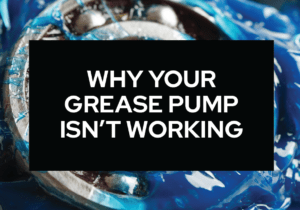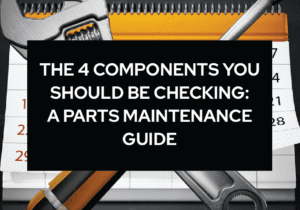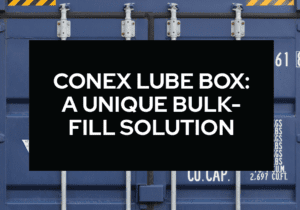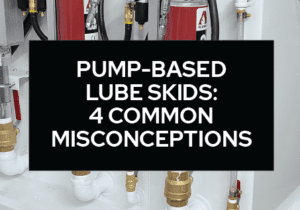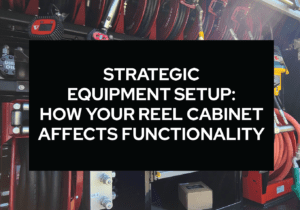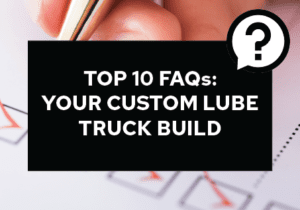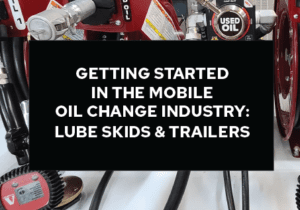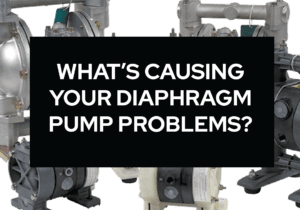Why Your Grease Pump Isn’t Working
New year, new … grease pumps? Not necessarily!
As 2024 rolls in and we all get back into our routines, it’s common to encounter equipment issues leftover from December – you know, the ones where we all said, “Eh, I’ll just handle it next year!” But now, that malfunctional grease pump is slowing – or even halting – your work day. The result is operational downtime, which can put a damper on even the best New Year’s resolutions.
When your grease pumps go down, there are 3 common issues that could be happening:
- Pump won’t dispense any product at all
- Continuously blowing air from the exhaust
- Inconsistent/slow product flow (even at high PSI)
… So how do you know which one is the issue with your pump?
Our grease pump guide below can help steer you in the right direction!
BEFORE YOU BEGIN:
- Check that you are using the correct PSI for the product and pump type
- Ensure your air compressor motor is working properly
- Confirm you actually have enough product in your barrel for the pump to engage
It’s also recommended to buy the manufacturer’s pre-built “repair kit” to ensure you have all necessary parts for the best results.
——————————————————————————————————–
DIAGNOSING YOUR GREASE PUMP ISSUE
For our example, we’ll be using this Graco Fireball 425 50:1 grease pump, which came into our shop. The customer states that it suddenly started blowing air out of the exhaust, and then stopped pumping altogether.
STEP 1: Flush & Disassembly
Follow the manufacturer’s maintenance guide to properly disassemble your specific pump. (This will include removing the priming tube and exterior pump housing, as well as the packings and gaskets.)
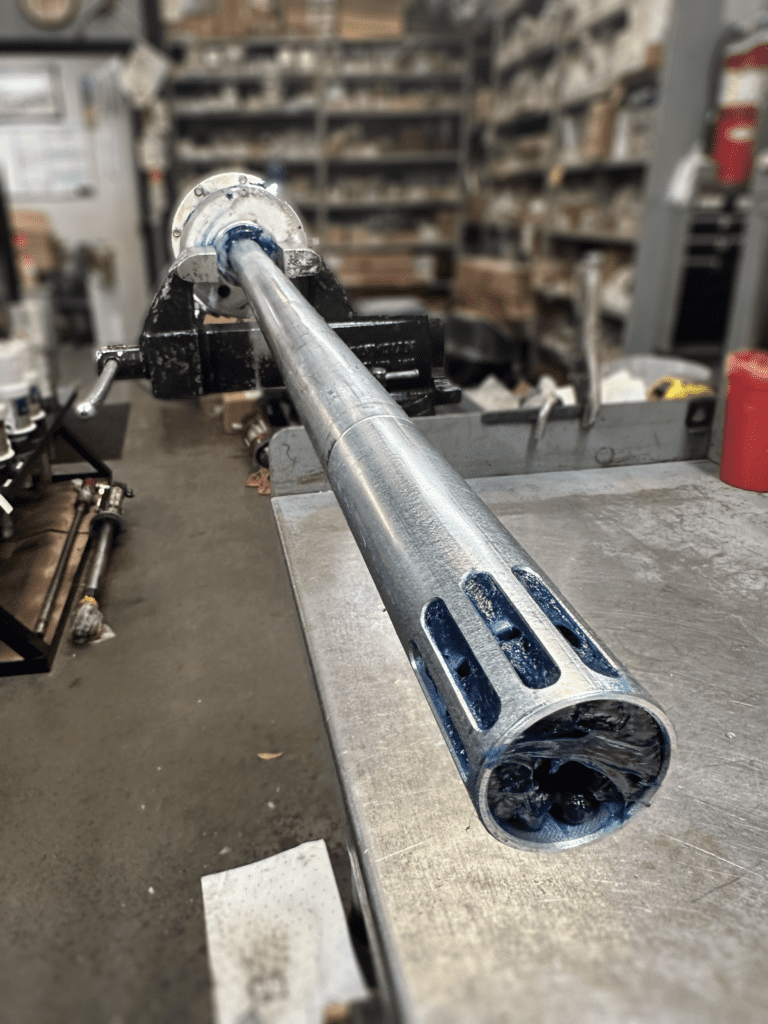
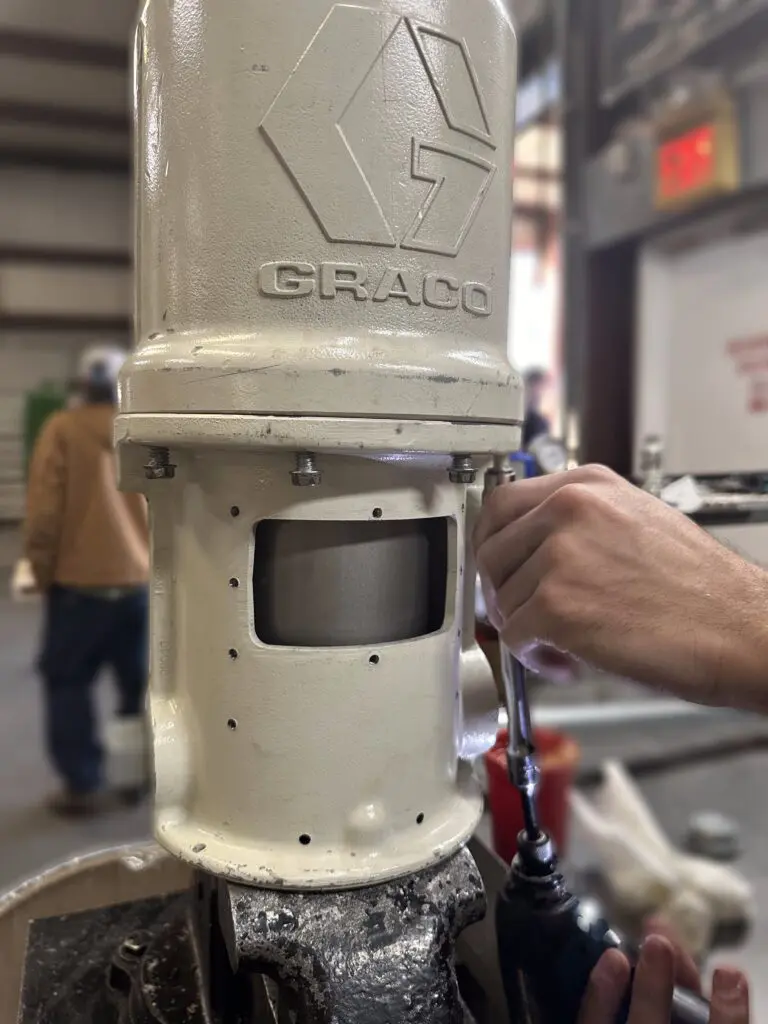
During this process, you will most likely be able to suspect what the underlying cause of your pump problems are.
STEP 2: Identify The Cause
There are three common culprits to pump dysfunction.
- Clogged/debris – Are there any rocks, dirt, metal shards, or even shop towel pieces lodged in the pump?
- Damaged air motor – Is the air motor functioning properly in the absence of other component damage?
- Gasket/packing damage – Are the gaskets, o-rings, or packings worn or damaged?
For the pump in our example, this is what the interior of the pump looked like after removing the pump housing cap.
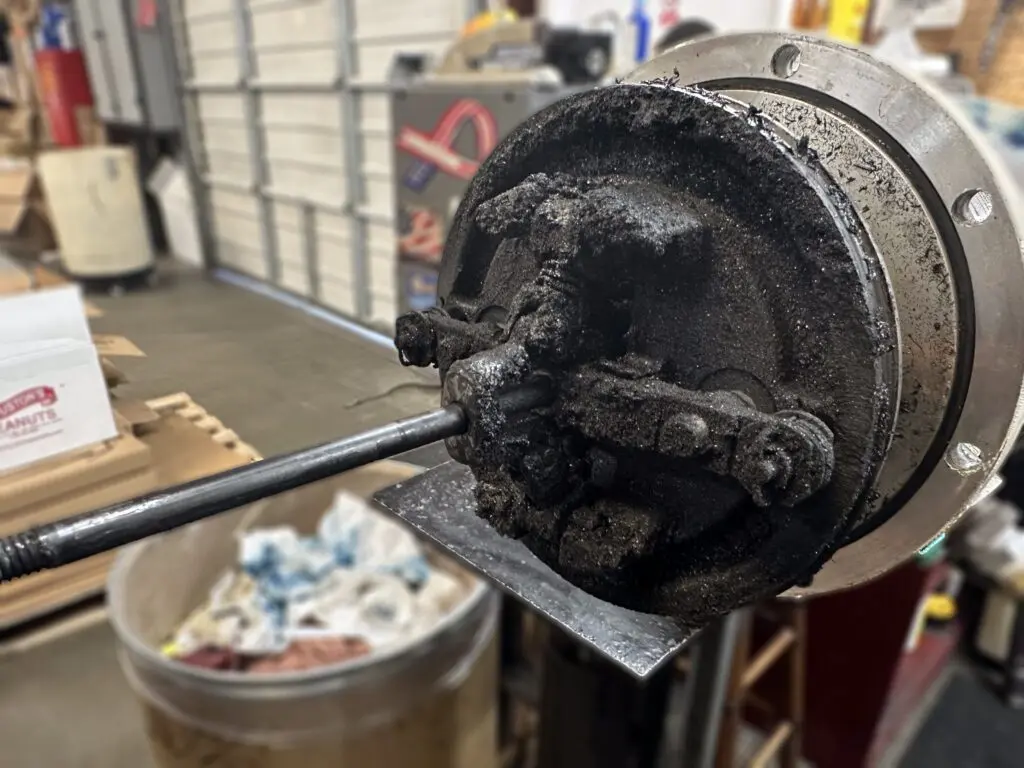
As we continued disassembly, we discovered that the piston o-ring has been worn down, as compared to the manufacturer’s replacement part. As this piston o-ring is vital in building pressure, its damage would cause the pump to slow the flow of product.
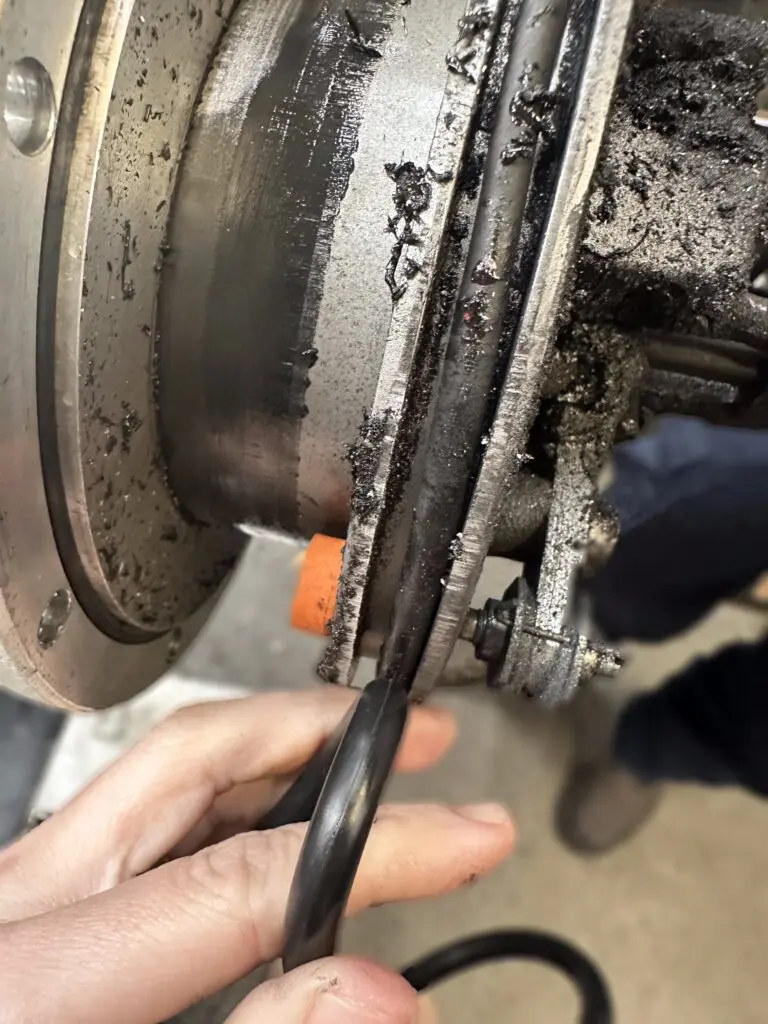
At this point, most techs will either (A) continue to run the pump hoping the slow flow was just an air bubble, or (B) increase the PSI hoping that increased pressure will cause it to work again. In this case, both of these actions caused the poppets to also become damaged, preventing the pump from functioning at all.

STEP 3: Clean Components & Replaced Damaged Parts
- • Use a compatible solvent (usually a multi-purpose degreaser) to remove any built-up grease/dirt/trash
- • Check additional packings and bearings for signs of wear/tear
- • Replace any parts that appear damaged or worn
STEP 4: Reassembly & Testing
Once all pump components have been thoroughly cleaned and/or replaced as needed, you can begin reassembly. Be sure to lubricate all parts (but not bolt threads) with a light, waterproof grease. The manufacturer’s maintenance guide for your specific product should also include step-by-step reassembly instructions to aid in this.
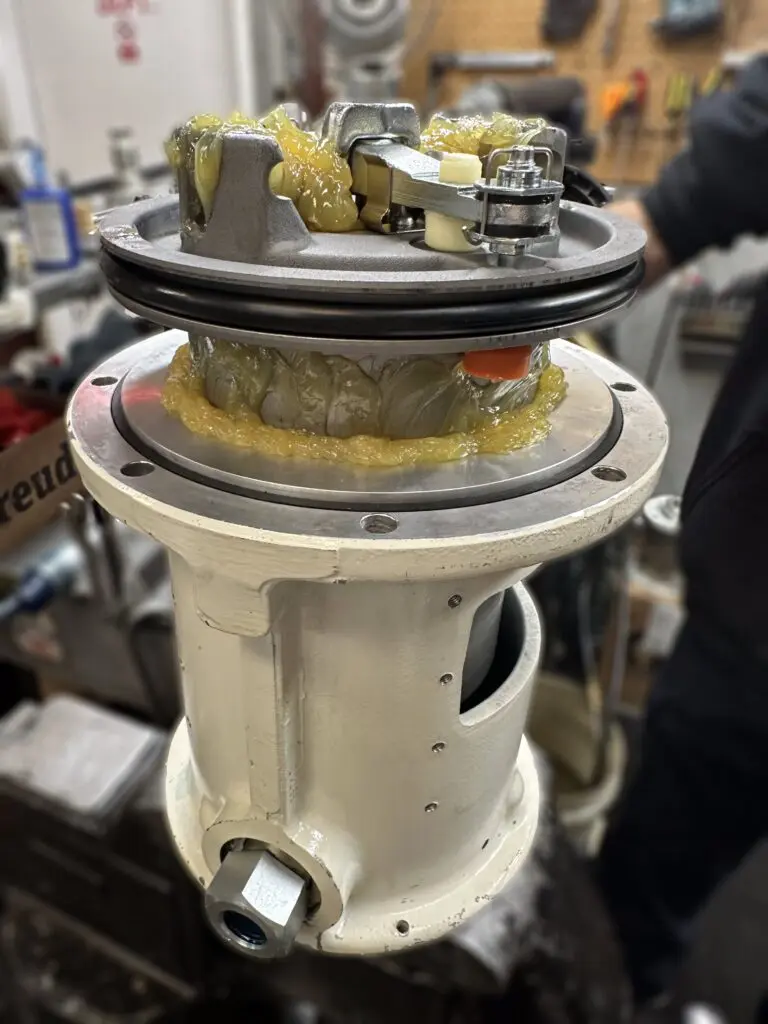
Don’t have the time to do this process on your own?
Our in-house repair team is always available to help! Send us a repair request here.
RELATED ARTICLES
Why Your Grease Pump Isn’t Working
New year, new … grease pumps? Not necessarily! As 2024 rolls in and we all get back into our routines, it’s common to encounter equipment issues leftover from December – you know, the ones where we all said, “Eh, I’ll just handle it next year!” But now, that malfunctional grease pump is slowing – or…
Read MoreWhy TPL Lube Trucks Are The Most Reliable
Reliability (noun): “performing consistently well, to a degree which the result can be depended on.” When you have a lube truck, skid, or system, reliability is a product characteristic that isn’t just expected – it’s non-negotiable. Your fluid exchange equipment needs to work reliably. But what does that mean to have a reliable lube truck? 1. It has to…
Read MoreThe Four Main Components You Should Be Checking: A Parts Maintenance Guide
As temps continue to rise across the country, summer is in full swing – often translating into increased performance demand on your teams and their equipment. While it may seem counter-productive to put extra time towards equipment maintenance, performing regular service on your PM equipment is vital to keep them running effectively and efficiently, especially…
Read MoreConex Lube Box: A Unique Bulk Fill Solution
Parallel to lube trucks and skids, businesses sometimes need a long-term (but not permanent) on-site, bulk-fill and bulk storage solution. Something with security, large holding capacity, and the option for unique customizations like work benches and tool cabinets. For over 20 years, Taylor Pump and Lift has been offering solutions like this repurposed Conex box…
Read MorePump-Based Lube Skids: Four Common Misconceptions
Lube skids are used in almost every industry across the country – fueling and greasing everything from airplanes and tractor trailers, to construction and farm equipment. As a staple pieces of service equipment, it’s imperative that business owners and technicians alike are familiar with how the function and form of each lube skid component impacts…
Read MoreStrategic Equipment Setup: How Your Lube Truck Reel Cabinet Affects Functionality
Much like a house, the layout of your lube truck and reel cabinets can either hinder – or improve – your productivity. During our build process, we identify the quantity and types of lube products you need. Based on that assessment, we construct your lube truck with optimal functionality in mind. QUESTIONS TO ASKOften times,…
Read MoreConstruction Boom & The Need For More-Efficient Lube Solutions
As the world continues to bounce back economically from the last two years of pandemic, the construction industry is expected to jump 4% in 2021 – totaling an additional $32B – and then another 8% in 2022, says ForConstructionPros.com. Commercial construction – which represents 30% of the total construction industry nationwide – is expected to grow…
Read MoreTop 10 FAQs: Your Custom Lube Truck Build
During our custom-building process, we often encounter a range of questions from our customers regarding their new lube truck or skid. These questions are vital to ensuring you get the correct lube equipment for your specific application, industry, and certification level. Read more about our top 10 FAQs below. 1. I want my lube/fuel truck…
Read MoreGetting Started in the Mobile Oil Change Industry: Lube Skids & Trailers
So you want to get started in the mobile oil change industry, but you’re not sure where to begin. TPL can help you determine if this new step is right for you! With the new year behind us, many business owners and lube truck operators are looking towards opportunities in 2021 – including additional income…
Read MoreWhat’s Causing Your Diaphragm Pump Problems?
Diaphragm pumps are used across a variety of product applications, but all pumps are destined to experience operation issues. While these issues range in severity and type based on the product compounds, pump material, location, etc., there are a few common issues that could explain why your pump is no longer working properly. Loss of…
Read More
